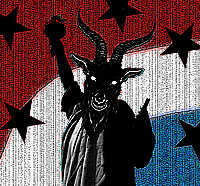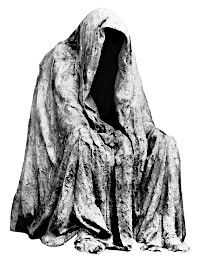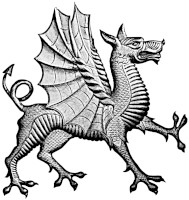In this period, the already charted Atlantic coast of North America was seeded with fur and slave trading posts, military bases, exile communities of religious dissidents and plantations intended to support military operations in the Caribbean and the trading posts and administrative towns, and in the warmer latitudes given over to cash crop cultivation, primarily of tobacco.
To the European merchants this was the era of tobacco and fur.
To their Indian trading partners, allies and adversaries, this was the age of steel and iron, of the long gun, which would become as sacred to them as any of their aboriginal rites or relics. The resulting relationship was not dissimilar to the uneasy peace between Asiatic nomads, who dominated warfare with the composite bow, and the settled lifeway of their enemies and prey, whose facilities were ironically required to manufacture the composite bow.
European ships sailed down into the mid-Atlantic and took favorable winds west to the Caribbean, and then made their way up the Atlantic coast. As the coasts had been raided for nearly a hundred years by fisherman, whalers and slave traders, the coastal populations of indigenous peoples had already been reduced by at least 50% [90% in Florida and Georgia] due to introduced disease and slave raiding. Once European settlements were established, the Indians generally suffered a 90% die-off resulting in cultural distortions, exasperated by Christian missionary efforts. However, colonists also suffered a 30-70% die-off from disease and malnutrition, as most were unskilled in agriculture, none of them could hunt at all and many were servants living on starvation rations.
The warrior ethos of Amerindian societies goes some way towards explaining the fact that they generally maintained military primacy for the next seventy years. However, based on the firearms advantage held by the Europeans and their vastly superior numbers, and the fact that they generally had as many Indian allies as enemies, one would expect the struggle to have favored the invaders. The fact is that only 10% of European men were armed in New York, Pennsylvania, Maryland and Virginia, and only an estimated half of the New England whites were free to bear arms during this period. There were also no firearms advantage on the part of the Europeans, as, from the earliest dates, the natives were armed by the colonial administrators and plantation owners, in return for aid in suppressing white slave revolts and for returning runaways and fugitives.
Of the two major wars of this period in New England, the first, the Pequot War, was won thanks to the use of Indian allies against the isolated Pequot tribe, and took place in 1637-38. The allied Indian uprising, known as King Phillip’s War, in 1675-76, broke native resistance with those natives not killed either being removed to Canada or sold into slavery in the Caribbean.
In Virginia, the wars that define this period are the Powhatan Uprising, in which white runaways banded together with Indians to wipe out the plantations in 1622-23, coming close to success. The war that crowns this period, Bacon’s Rebellion in 1676, in which white renegades, white slaves, and black slaves, allied against colonial officials, the plantation owners, Indian tribes and even pirates, in a knock down drag out fight which resulted in the burning of Jamestown, also came close to victory for the rebels.
The nature of life during this period was colored by the task of clearing an old growth forest. In the Mid-Atlantic region the trees were so massive that they were ringed and bled to death, without clearing them at first, with crops planted around them. The English method was to kill the forest now and fell it later. The people who felled these forests beginning in 1622, were kidnapped children, convicted criminals and prisoners of war, primarily Scottish.
Frontier life was not one of small homesteads as in American colonial myth, but of plantations. Indeed the colonies were not called colonies, but The Plantations, by those who lived and traveled there. Fur trading posts were common in the uplands, where skins and pelts were traded for guns and tools, striking the modern reader as more reminiscent of the Far West of the early 1800s, than what we are conditioned to think of as “Colonial America.”
Only small numbers of black slaves were imported, primarily from the plantations of the Caribbean, where they had learned English, which made them favored household slaves in New England, too expensive for Marylanders, and caused trouble in Virginia, where they were used as tobacco field hands, and conspired with English, Scottish and Irish slaves in escapes and uprisings. After this period, black slaves would be sought directly from Africa, so that there lack of English language ability—and ability to understand one another's tribal languages—might prevent their conspiring with each other and white slaves to turn on their mutual oppressors. After this period white slaves would no longer be housed with blacks, for this very same reason.











